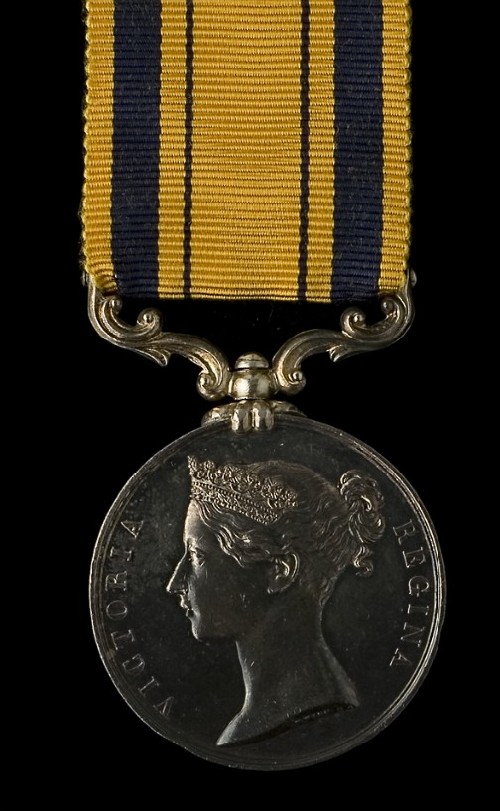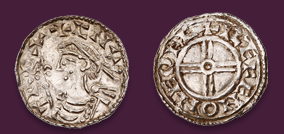
Auction: 9022 - Orders, Decorations, Medals & Militaria
Lot: 163
x The South Africa 1834-53 Medal to Ensign W.W. Simkin, Cape Mounted Rifles, Late Colour Sergeant 73rd Foot, Who Distinguished Himself in A Cavalry Charge at the Battle of Berea, When 36 Men Broke Through the Lines of Some Two Thousand Basutos, 20.12.1852 South Africa 1834-53 (Ensign W.W. Simkin, Cape Md. Rifles.), minor edge bruising, otherwise good very fine Estimate £ 550-650 Ensign William Wallace Simkin (also recorded as Simpkin), born Dunmow, Essex, 1810; enlisted 1st Royal Dragoons, 1839; transferred 73rd Foot, 1845; arrived Cape of Good Hope the following year; advanced Colour Sergeant 1847; transferred Cape Mounted Rifles 1848; Sergeant Major 1851; commissioned Ensign April 1852, the letter of recommendation from his Commanding Officer states that Simkin had "greatly distinguished himself by his gallantry during this war [Third Kaffir War] as well as by his good conduct in quarters", this is echoed in J. Mckay´´s Reminiscences of the Last Kaffir War, ´´The Lancers and Cape Corps continued their advance, inclining towards the left of Thaba Bosigo, a precipitous irregularly formed mountain, on the top of which were built the homes of Moshesh and his principal councillors. Along the projecting summit of the hill massive stone walls were erected, and no appearance of an enemy having been seen when the cavalry got thus far, they continued their ascent. The troops were compelled to dismount at some of these obstacles, and ascend in single file. At some of the rocky erections they had to pull down the walls to enable their horses to ascend. These were exciting moments to the men. Having seen no enemy, their undisputed advance, and the general treacherous character of the enemy, caused them momentarily to expect a deadly volley from a hidden foe. Leading their horses, they gained the top unopposed, when they observed large herds of cattle, the only plunder to be seen. The cavalry dashed ahead to capture them, when Basutos, numbering thousands, poured from the kloofs and krantzes upon the scene, with apparent determination to defend their stock. The battle of Berea now began, and tens of Lancers and C.M. Rifles were ordered to charge squadrons of mounted Basutos. Captain Oaks, 12th Lancers, Major Armstong, C.M.R., Captain Carey, C.M.R., Ensign Simpkins, C.M.R., and a few troopers (about thirty-six in all), observing cattle moving away to their right, galloped off in that direction, and were returning in high glee with their booty, when to their dismay they found their line of retreat cut off by about two thousand of the enemy. This small party was nearly annihilated. The officers called out to the men that it was death or glory, and the men nobly responded to the sentiment; hastily forming themselves compactly for a deadly charge at the masses of swarthy horsemen in their front, their waved their swords and lances in the air, and with a wild hurrah charged at the irregular ranks of the enemy. The cowardly Basutos fled right and left from the few gallant Britons, leaving an open space for their retreat, but sent a destructive irregular fire after them. They continued their retreat, followed by numerous enemy, and when they began their descent down the rocky pathways, a heavy cross-fire was kept up at them by numbers of the enemy who had taken cover behind rocks and stone walls. Twenty of this party were left on the heights dead, besides those who were wounded´´; Simkin retired by sale of his commission, 1856.
Sold for
£2,000




